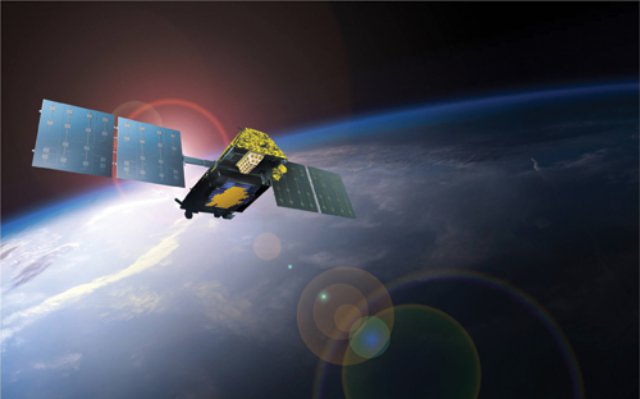 A group of Pentagon officials was given three months to come up with a plan to boost the supply of satellite bandwidth that is needed to support the military’s growing fleet of unmanned aircraft systems.
A group of Pentagon officials was given three months to come up with a plan to boost the supply of satellite bandwidth that is needed to support the military’s growing fleet of unmanned aircraft systems.
The order came from Undersecretary of Defense for Acquisition, Technology and Logistics Frank Kendall. The challenge he laid out is twofold: Find ways for the Pentagon to capitalize on lower-cost commercial satellite communications technology. And figure out whether this technology can satisfy unique military demands such as protecting UAS data links from hackers.
“Kendall has given us a 90-day window to come up with a notional framework for how the Defense Department is going to provision satcom into the future,” said Charles Beames, Principal Deputy Assistant Secretary of Defense for Space and Intelligence.
Worries about soaring bandwidth demand at a time of shrinking budgets have prompted a reexamination of how the Pentagon buys satcom hardware and services, Beames said last month at the Satellite 2013 industry trade show in Washington, D.C.
The bandwidth crunch caused by UAS — which require connectivity for their command and control, and to stream live video — has been a frequent topic of discussion in industry circles for years. The issue gained more urgency in 2009 after then-Defense Secretary Robert Gates terminated the “transformational satellite” program, or TSAT, that was intended to provide encrypted wideband communications. The void left by TSAT has been filled mostly by commercial alternatives. Defense officials had hoped the Pentagon would fund new military satellites to support burgeoning UAS operations, but exorbitant price tags and budget cuts have stalled those efforts.
Most military UAS currently are operated by commercial satcom links, and their data, too, is transmitted via nonmilitary satellites. Industry experts believe that the cost of retrofitting the entire UAS fleet to military satcom would be prohibitively high. Pentagon officials are considering alternatives that are based on commercial technology, and would allow the aircraft to keep using their existing terminals.
A more commercial approach to secure satcom could open the door for industry to offer suggestions, Beames said. “It’s creating an opportunity for people with great ideas to have them introduced into the conversation and be considered,” he said. “A lot of people have cautioned me that a comprehensive framework has been attempted many times in the past” but one never materialized. Budget cuts have proved to be the catalyst for taking action, he said.
Satellite providers do not believe the Pentagon has much of a choice. Military spacecraft currently supply 60 percent of the Defense Department’s satcom demand. With no plans to build new constellations for at least a decade, the military will become more dependent on commercial bandwidth. The military constellations that are currently being built — the Advanced-Extremely High Frequency, the Wideband Global Satcom and Mobile User Objective System — will not be enough to support future requirements for mobile communications and UAS, said Charles H. Cynamon, a retired Air Force colonel and now senior director of Hughes Network Systems LLC.
Besides a shortage of military satellite capacity, the Pentagon has to face the fact that there are no terminals being produced to convert UAS from commercial to military satellite links, Cynamon said in an interview. The high cost of military satcom terminals also is a problem, he said. A $2 million secure satcom terminal might be justifiable for a $100 million UAS such as the Air Force Global Hawk, but not a $4 million Predator.
To read the complete article, click here.
Photo: Aerion Satellite concept
Source: National Defense
